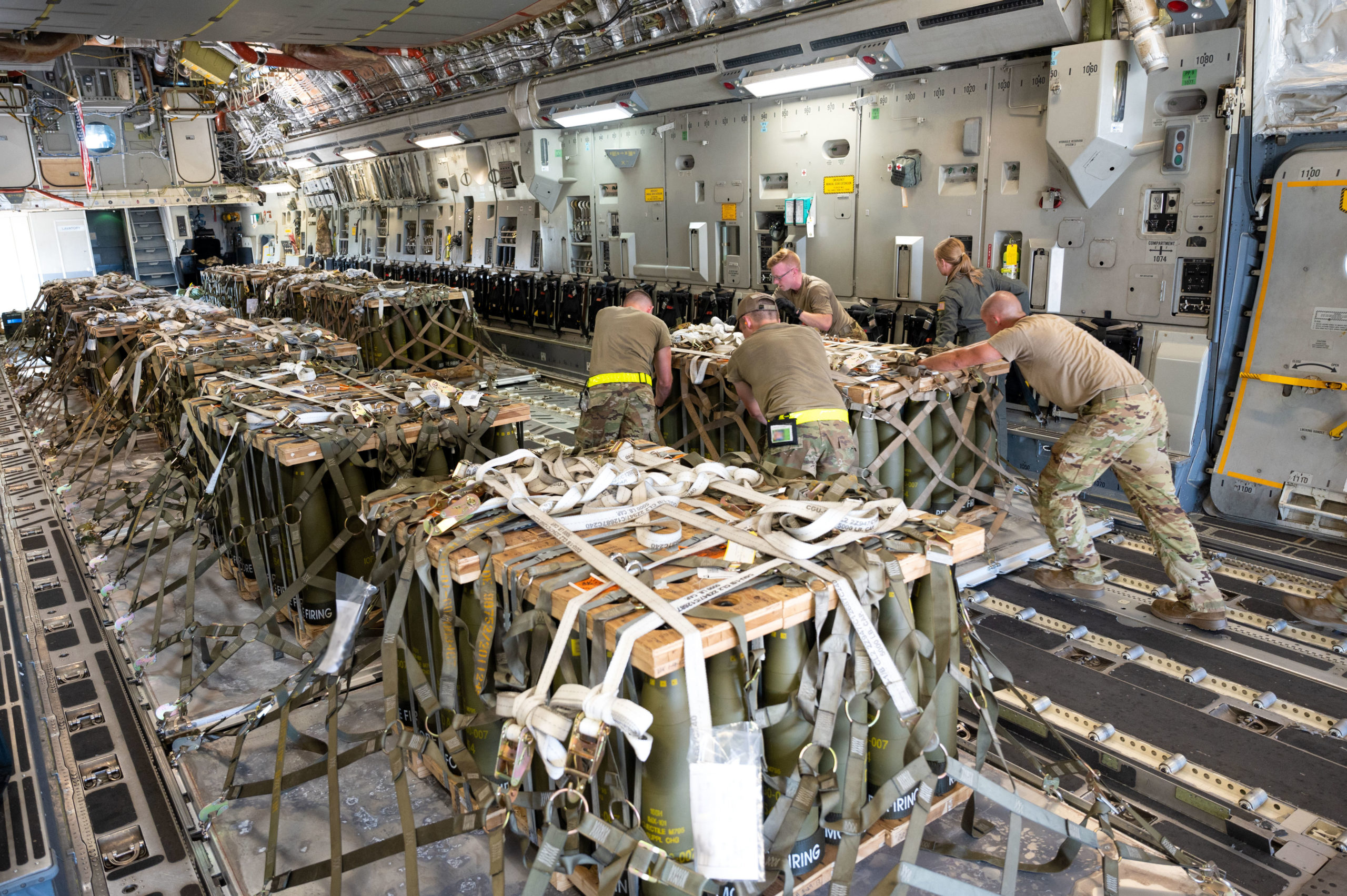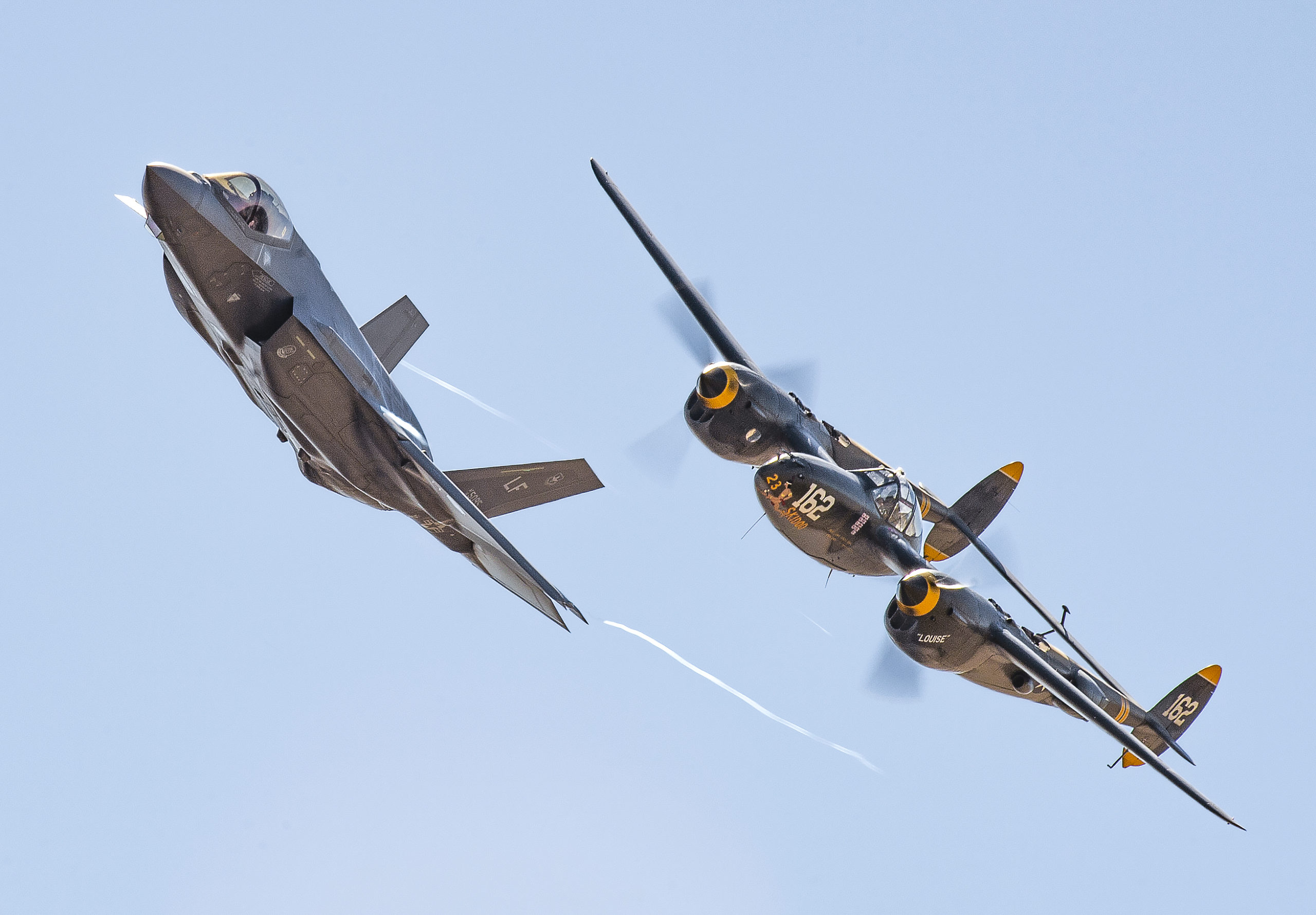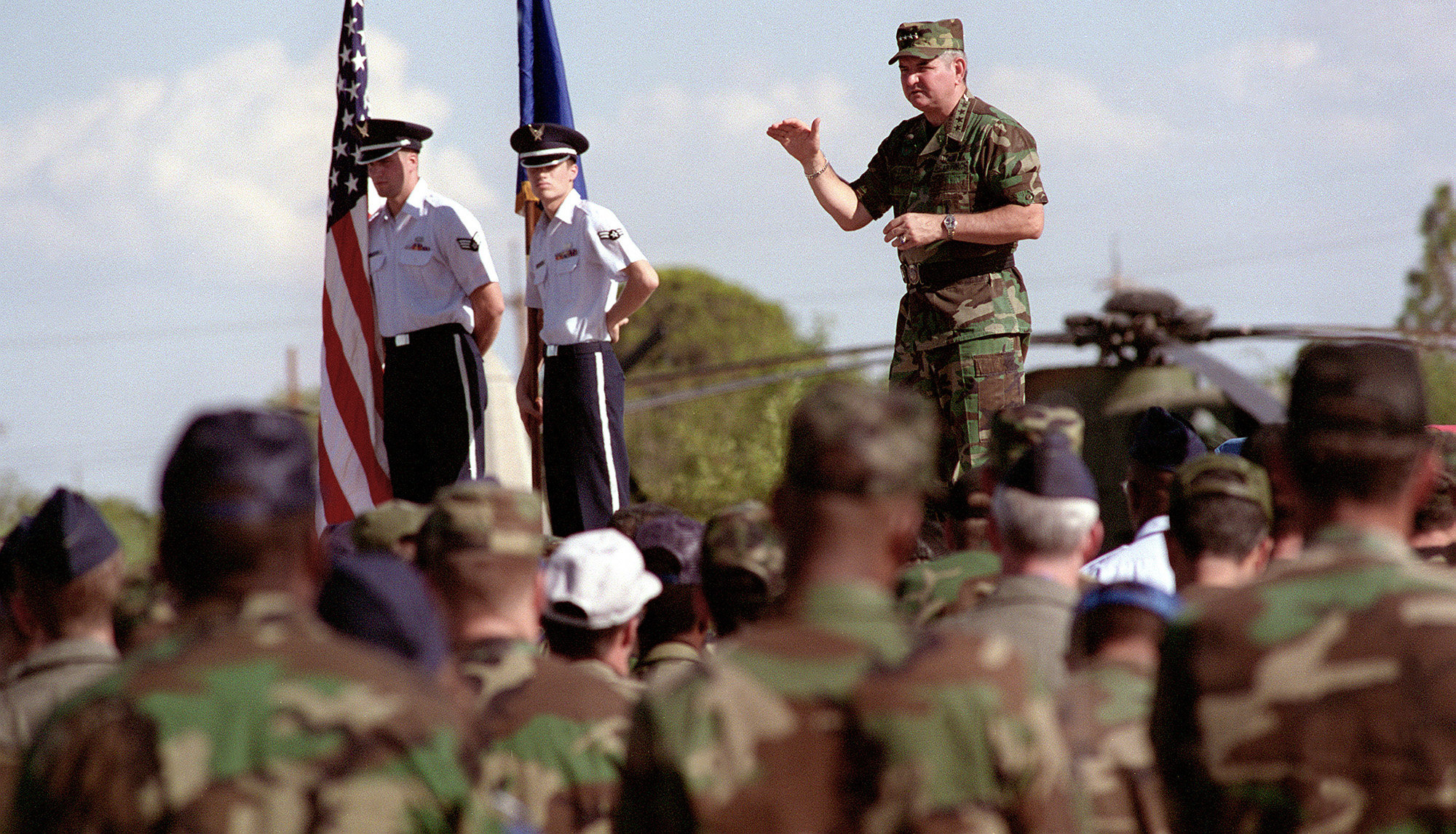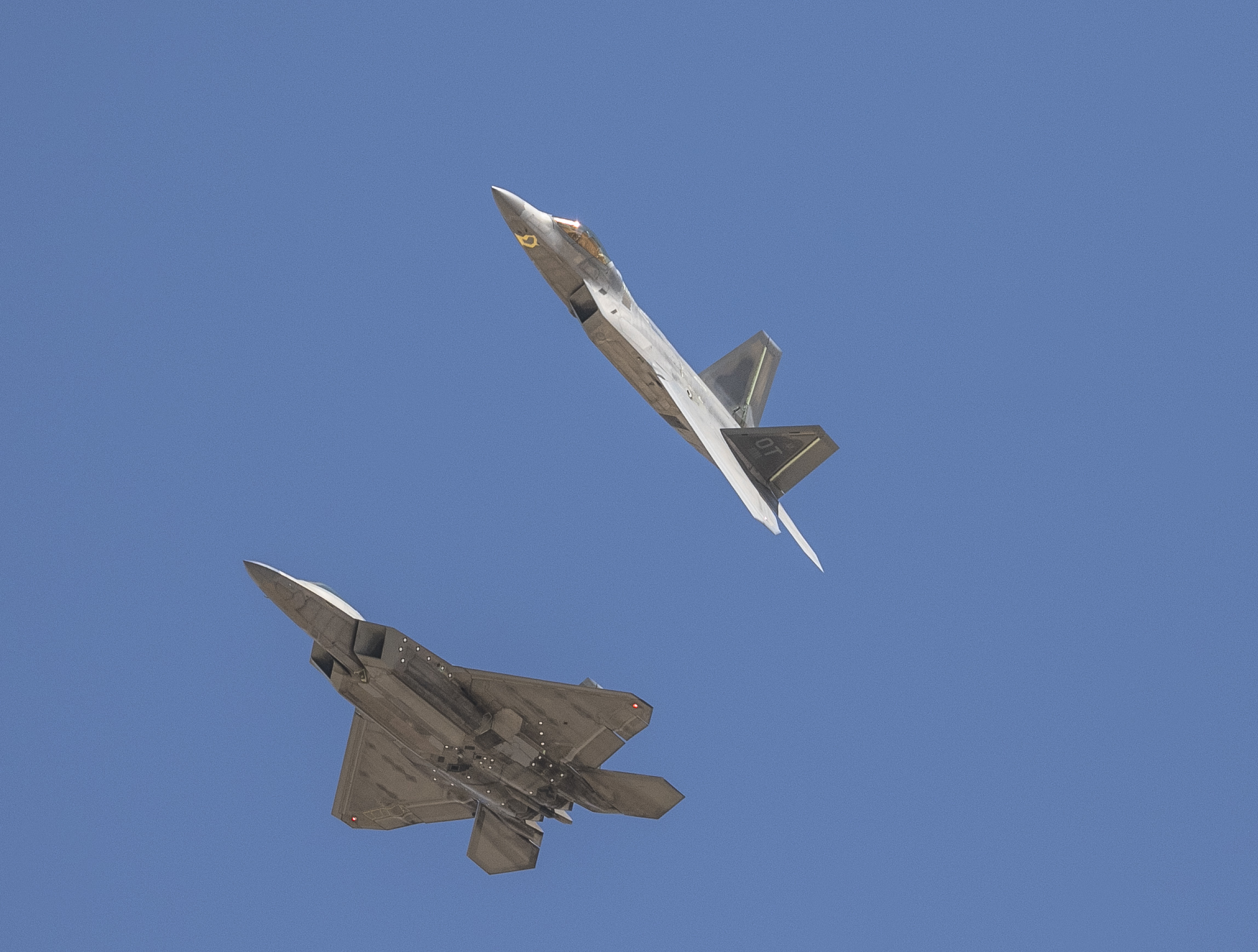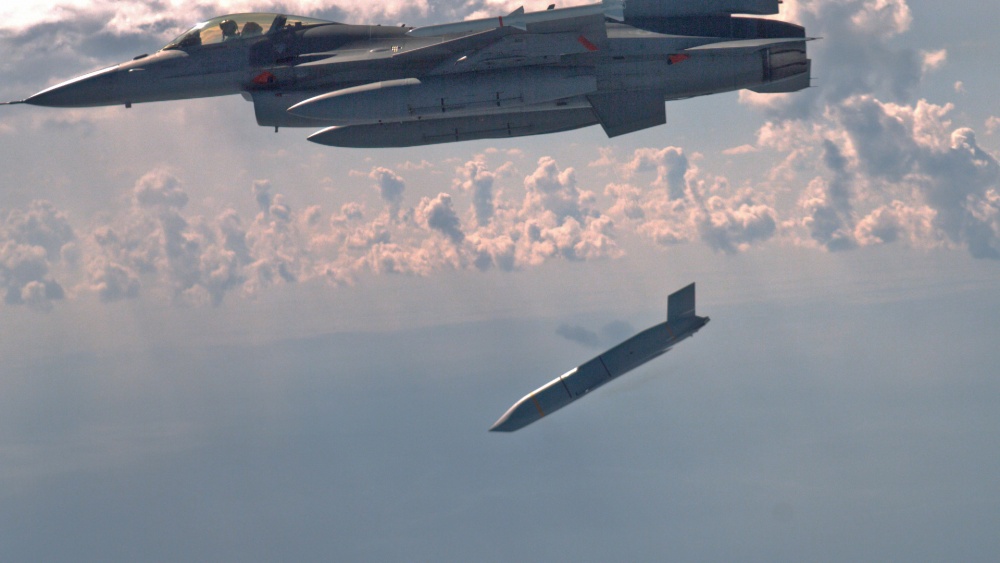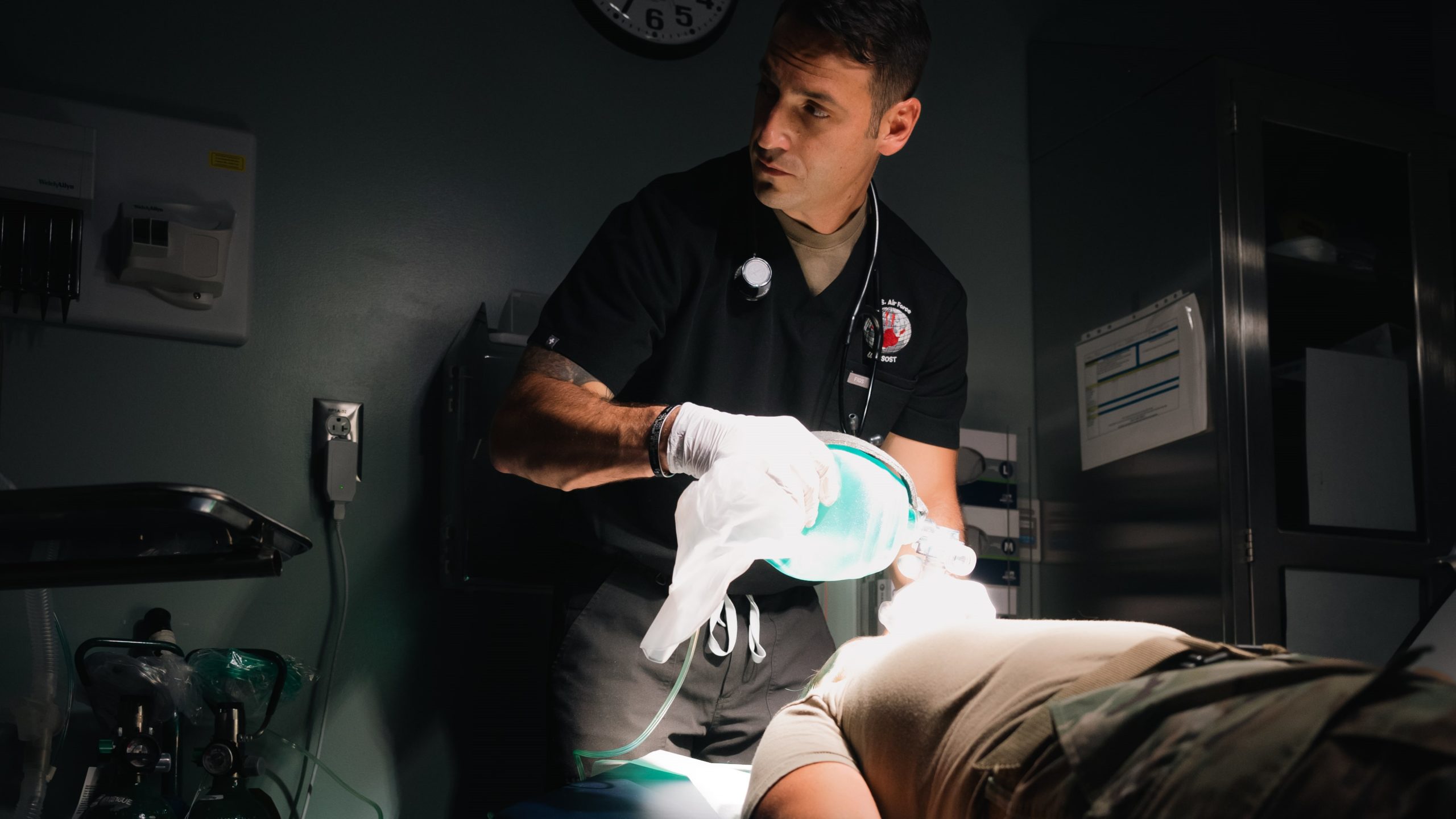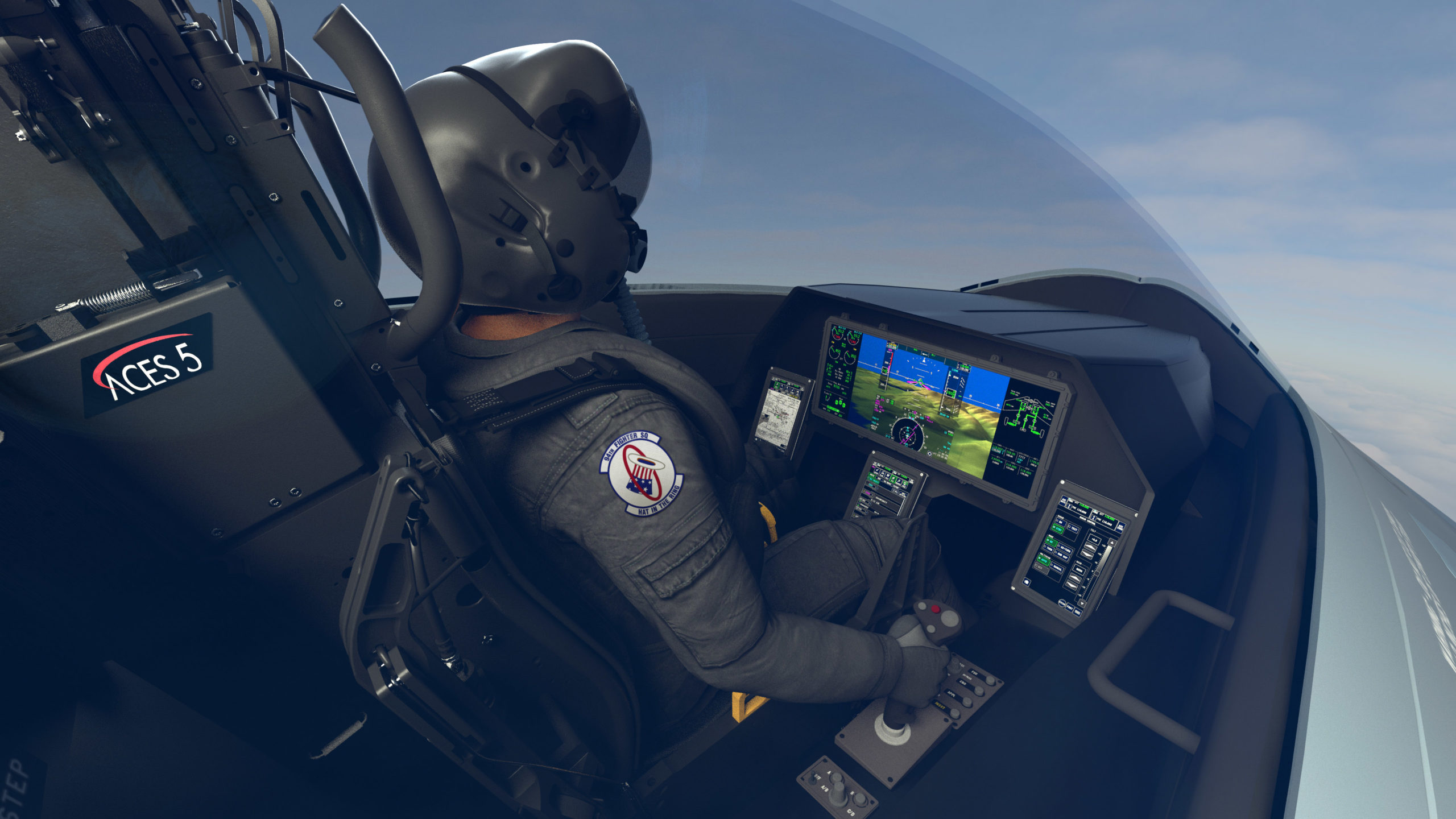| September 18, 1947: As Stuart Symington is sworn in as the first Secretary of the Air Force, the Lockheed P-80 Shooting Star, a year before being redesignated F-80, is America’s first jet-powered operational aircraft. Sikorsky’s H-5 Hoverfly is USAF’s rescue helicopter and six Lockheed aircraft types are in development or test and numerous WWII aircraft remain in the inventory, including Lockheed C-69 Constellation transports and approximately 200 P-38J/L Lightning fighters. |
| April 12, 1953: After Air Force ace Capt. Joseph McConnell claims his eighth MiG kill over Korea, his F-86 Sabre suffers mechanical difficulties and ejects over the Yellow Sea. Two Sikorsky H-19s from the 3rd Air Rescue Squadron recover him minutes after he hits the water. |
| July 23, 1953: Martin chief test pilot O.E. “Pat” Tibbs makes the first flight of the first Martin-built B-57A Canberra medium bomber. When B-57 production ended in 1959, USAF had acquired a total of 403 Canberras. |
| March 4, 1954: The Lockheed XF-104, supersonic superiority fighter makes its first flight. On May 18, 1958, an F-104A sets a world speed record of 1,404.19 mph, and on December 14, 1959, an F104C sets a world altitude record of 103,395 feet. The Starfighter was the first aircraft to hold simultaneous official world records for speed, altitude, and time-to-climb. |
| August 23, 1954: Lockheed’s YC-130 Hercules tactical transport prototype flies from the Lockheed plant in Burbank, Calif., to nearby Edwards AFB, setting the stage for the ubiquitous aircraft. Today, there are more than 2,600 C-130 variants in the skies, including five major production models, and more than 70 variants—the longest, continuous, active military aircraft production line in history. |
| August 1, 1955: Article 341, prototype for Lockheed’s U-2 high altitude reconnaissance aircraft makes an inadvertent first flight during a high-speed taxi test at Groom Lake, Nevada. The Dragon Lady still flies today. |
| June 11, 1957: The first test launch of the Lockheed Martin legacy company Convair B-65 Atlas (later redesignated SM-65; later still, designated HGM-16) intercontinental ballistic missile (ICBM) is carried out from Cape Canaveral AFB, Fla. The Atlas, America’s first ICBM was declared operational and served for six years. |
| February 6, 1959: The first test launch of the Martin SM-68 (later HGM-25) Titan I intercontinental ballistic missile lifts off from Cape Canaveral AFS, Florida. Entering operational service in 1962, Titan I was the United States’ first multistage ICBM, providing an additional nuclear deterrent to complement the U.S. Air Force’s Atlas missile. |
| July 20, 1960: The last of about 100 flights by a Lockheed X-7 ramjet test vehicle is completed. Lockheed built The 26 X-7s and set multiple speed and altitude records for air breathing vehicles, topping out at Mach 4.31 and, on a different flight, an altitude of 106,000 feet. |
| June 17, 1963: The first Sikorsky S-61 prototype flies. A variant of the Navy SH-3 Sea King antisubmarine warfare helicopter, it will evolve into the CH-3C utility, and HH-3E Jolly Green Giant, the workhorse rescue helicopter of the Vietnam era. |
| August 19, 1960: The reentry vehicle containing film images, captured by a classified Lockheed Missile and Space Company KH-1 reconnaissance satellite, is recovered in mid-air over the Pacific by a Fairchild C-119 Flying Boxcar—the first usable intelligence images from the Corona satellite family. |
| April 26, 1962: Company test pilot Lou Schalk makes the first true flight of the Lockheed A-12 high altitude, high speed reconnaissance aircraft at Groom Lake, Nev. Developed by the Lockheed Skunk Works—the A-12 is the forerunner to the YF-12 interceptor and SR-71 Blackbird. |
| December 21, 1964: Company test pilots Dick Johnson and Val Prahl make the first flight of the variable geometry, or swing-wing, F-111 deep strike aircraft from Carswell AFB, Texas, next to the company’s plant in Fort Worth. A total of 562 F-111s were built. |
| August 28, 1967: Company test pilot Bill Park makes the first flight of the Lockheed U-2R Dragon Lady high altitude reconnaissance aircraft. Although similar in appearance to the early model U-2s, the U-2R is about one-third larger and powered by a much more powerful J57 engine. About 50 U-2Rs were built, later upgraded with an F118 turbofan engine and other improvements and redesignated U-2S. |
| June 30, 1968: The Lockheed C-5A Galaxy, then the world’s largest aircraft is flown for the first time Five years later, during the 1973 Yom Kippur War, battle tanks flown directly to Tel Aviv on the C-5s were on the front lines within 90 minutes. Two recently completed upgrade programs will keep what’s now designated the C-5M Super Galaxy flying until at least the 2040s. |
| January 20, 1974: Company test pilot Phil Oestricher takes the General Dynamics YF-16 prototype out on a high-speed taxi test at Edwards AFB, Calif., but the aircraft makes an unplanned and unofficial first flight. Today, about 3,000 of 4,588 F-16s produce are in service today in 25 countries. |
| June 18, 1981: Company test pilot Hal Farley makes the first flight of the Lockheed F-117 Nighthawk, the world’s first production stealth aircraft. First used during capture of the Panamanian strong man Manuel Noriega in 1989, F-117 pilots would carry out the first strikes against Baghdad on the opening night of operation Desert Storm in 1991. |
| September 30, 1983: Officials at the Air Force’s Rome Air Development Center at Rome, New York approve the AN/FPS-117 built by legacy Lockheed Martin GE Aerospace. Developed under a program called Seek Igloo, this low power, long-range, phased array, 3D air search radar that operates in the D-Band modernized the Distant Early Warning (DEW) Line series of radar stations across the Arctic, from Alaska through Canada over Greenland to Iceland. The FPS-117 reached full operational capability later in 1983. |
| June 17, 1983: Air Force Systems Command Ballistic Missile Office, the 6595th Missile Test Group, and a contractor launch team carry out the first test launch of the Martin Marietta (a legacy Lockheed Martin company) LGM-118 Peacekeeper intercontinental ballistic missile (ICBM) from Vandenberg AFB, Calif. The missile travels 4,800 miles to strike successfully in the Kwajalein Test Range in the Pacific. |
| 1985: Launched in the heat of Santa Barbara California’s “Infrared Valley,” Lockheed Martin Missile and Fire Control’s Santa Barbara Focalplane facility is established. |
| September 29, 1990: Lockheed test pilot Dave Ferguson makes the first flight of the Lockheed-Boeing-General Dynamics YF-22 Advanced Tactical Fighter (ATF) prototype . It is the forebear of the F-22 Raptor. |
| April 5, 1996: The new Lockheed Martin C-130J Super Hercules transport takes its first flight. Now with more than 500 aircraft built, the C-130J (as of 2022) is today flown by 26 operators worldwide, including the Active-duty U.S. Air Force, Air National Guard, and Air Force Reserve Command. |
| September 7, 1997: The first flight of the Lockheed Martin F-22 Raptor air dominance fighter is made, six years after Lockheed won the competition in 1991. On May 12, 2005, the first combat-capable Raptor was delivered to the Air Force at Langley AFB, Va. |
| 1997-2009: Twenty GPS IIR and GPS IIR-M satellites built by Lockheed Martin for the U.S. Air Force are launched, adding new capabilities, signals, and anti-jamming to the GPS constellation. |
| December 15, 2006: The first flight of the first F-35 Lightning II multivariant, multirole, multinational fighter includes a military power takeoff and a series of maneuvers to demonstrate the handling qualities of the conventional takeoff and landing (CTOL) variant. |
| May 7, 2011: The first Lockheed Martin-built Space Based Infrared System (SBIRS) geosynchronous Earth orbit satellite for the U.S. Air Force is launched from Cape Canaveral AFS, Fla. Follow-on space vehicles will form an orbiting Overhead Persistent Infrared (OPIR) missile warning constellation equipped with powerful scanning and staring surveillance sensors. |
| June 26, 2014: The Air Force awards Sikorsky the contract for the Combat Rescue Helicopter (CRH), the follow on aircraft to the HH-60G Pave Hawk. The HH-60W takes its first flight five years later, on May 17, 2019, and is dubbed the Jolly Green Giant II. |
| June 24, 2016: The fifth of five Mobile User Objective System (MUOS) secure, narrow band communications satellites is launched from Cape Canaveral AFS, Fla. Originally built for the U.S. Navy, MUOS was transferred to the U.S. Space Force in 2022. |
| April 14, 2018: Lockheed Martin AGM-158 Joint Air-to-Surface Standoff Missiles (JASSM) are used in combat for the first time. The U.S. Air Force deployed B-1 bombers and launched 19 JASSM missiles at the Syrian regime’s chemical weapons production facility. |
| September 26, 2019: The U.S. Air Force declares Initial Operational Acceptance for the ground control system of the Lockheed Martin Space-developed Space Based Infrared System (SBIRS). |
| March 28, 2020: The newly created United States Space Force (USSF) declares operational acceptance and initial operational capability of the Space Fence S-band radar on the Kwajalein Atoll in the Republic of the Marshall Islands. Space Fence, now the world’s most advanced radar, provides uncued detection, tracking, and accurate measurement of space objects, including satellites and orbital debris, primarily in low-earth orbit (LEO). |
| September 21, 2021: The first demonstration of air-launched palletized munitions from a mobility aircraft (a Lockheed Martin C-130) is carried out. |
| May 14, 2022: U.S. Air Force Armament Directorate and Lockheed Martin conduct the first successful hypersonic-boosted flight test of the AGM-183 AGM-Air-launched Rapid Response Weapon (ARRW). Launched from a B-52H Stratofortress based at Edwards AFB, Calif., the test demonstrates the system’s ability to attain hypersonic speed—in excess of Mach 5. ARRW is the first air-launched hypersonic weapon for the Air Force. |
